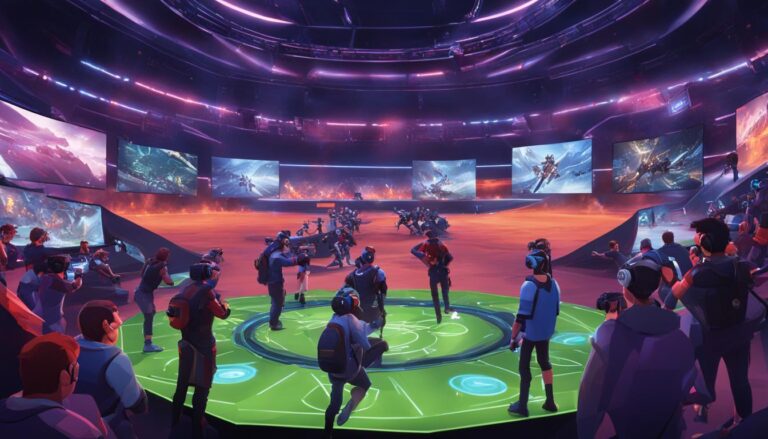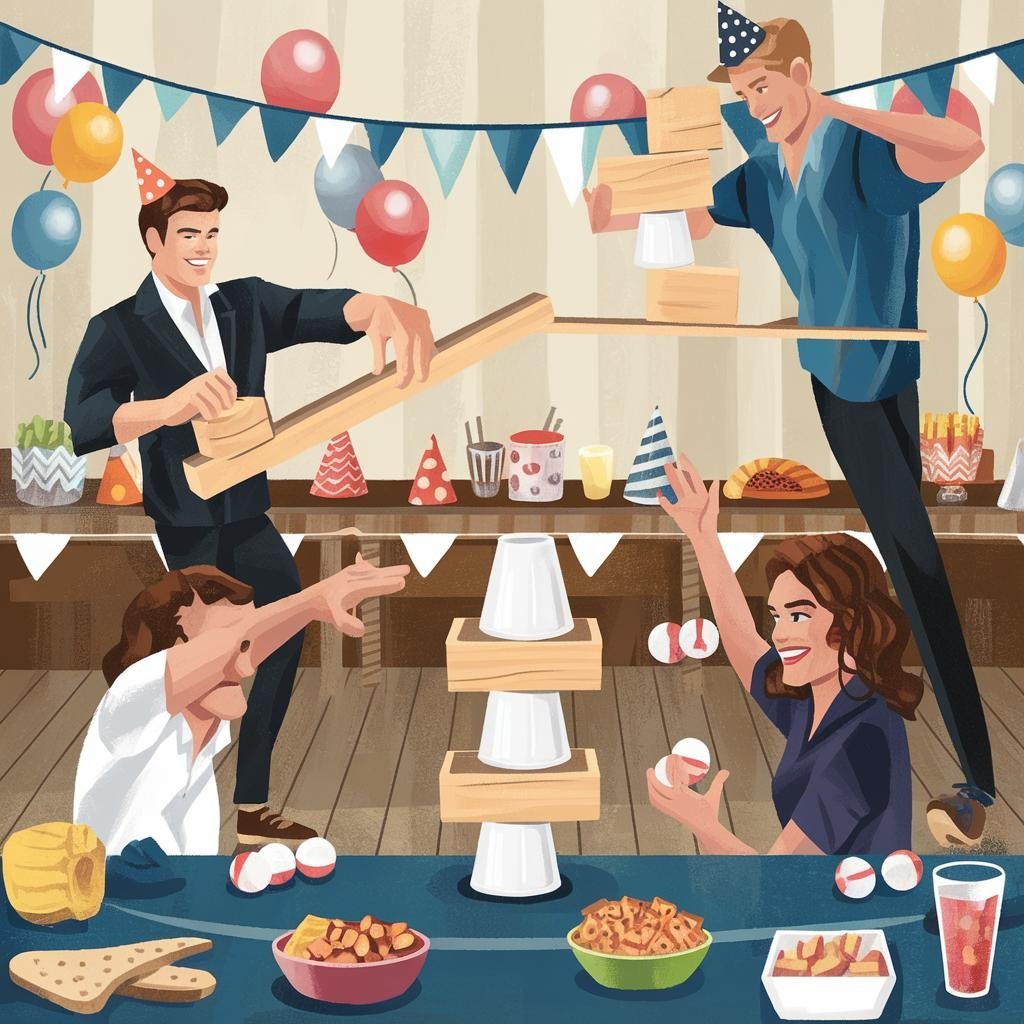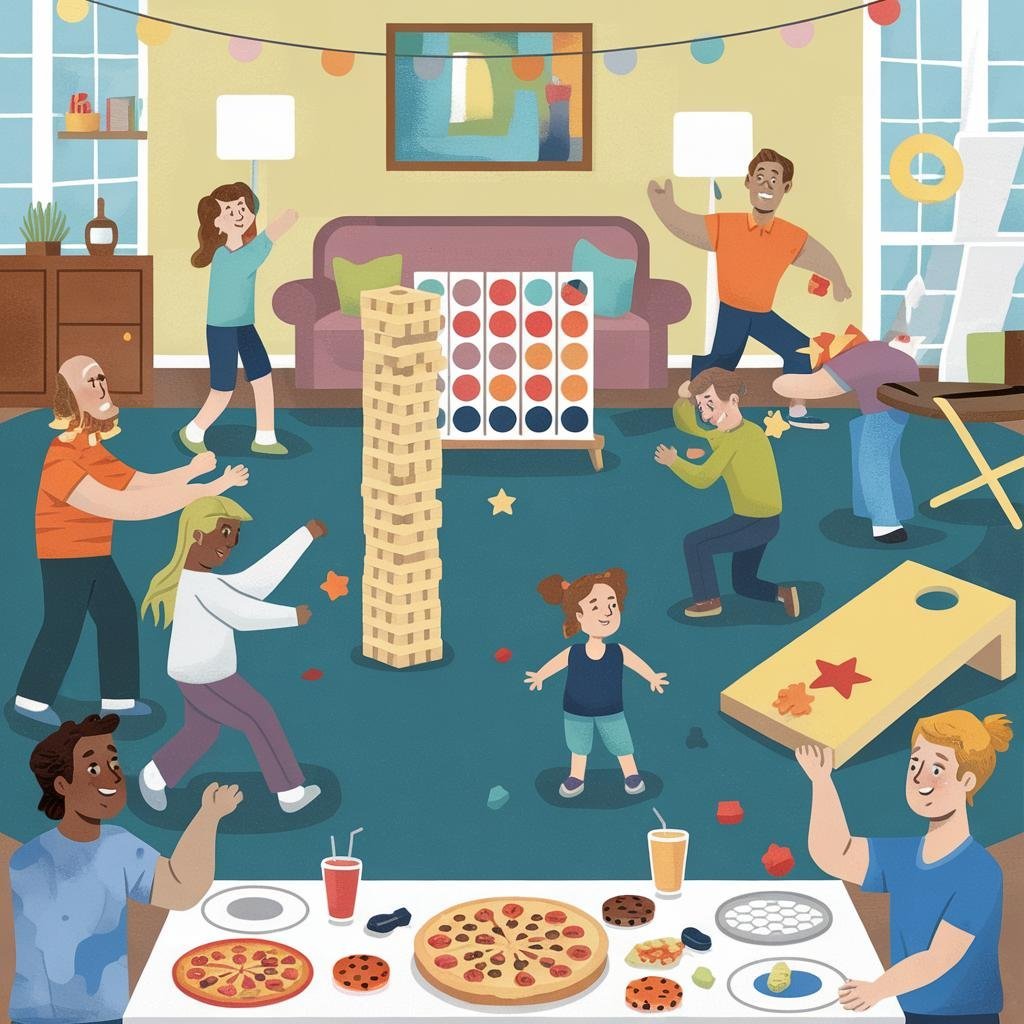Disclosure: This Post Contains Affiliate Links; We earn a commission on purchases.
Teamwork is the cornerstone of successful collaborations, whether it’s in the workplace, sports, or any group setting. To maximize team performance and foster a positive group dynamic, it’s essential to address cooperative challenges head-on. From engaging in teamwork activities to solving problems collaboratively, these challenges can enhance effective team communication and collaboration.
One of the most effective ways to overcome cooperative challenges is through team building exercises. These activities not only promote group problem-solving but also help team members understand their individual strengths and how they contribute to the overall team dynamic. Whether it’s in a virtual or in-person setting, incorporating regular team building exercises can lead to improved communication, trust, and team performance.
Key Takeaways:
- Cooperative challenges are essential for team players to enhance teamwork and collaboration.
- Team building exercises promote effective team communication and trust within the group.
- Engaging in group problem-solving activities helps team members understand their individual strengths.
- Regular team building exercises can lead to improved team performance.
- Cooperative challenges can be addressed in both virtual and in-person team settings.
Table of Contents
The Benefits of Team Building Games
Team building games are a fun and creative way to get your team connecting and working together. These activities promote team cohesion, strengthen individual strengths, and improve overall team performance. Whether your team is virtual or in-person, team building games offer numerous benefits that enhance communication, trust, and collaboration.
One of the key advantages of team building activities is their ability to foster team cohesion. By engaging in these games, team members develop a sense of camaraderie and build relationships with one another. This, in turn, improves teamwork and creates a supportive and cooperative environment.
Additionally, team building games provide an opportunity for team members to understand each other’s strengths. Through various challenges and exercises, individuals can recognize their unique abilities and learn how to complement one another. This knowledge leads to better task allocation, efficient problem-solving, and enhanced productivity.
Another notable aspect of team building games is their adaptability to both virtual and in-person teams. Regardless of the team’s physical location, these activities can be tailored to accommodate different settings. This inclusivity ensures that all team members can participate and benefit from the team-building experience.
Improved Communication and Trust
Team building games are instrumental in improving communication within a team. By engaging in collaborative activities, team members develop effective communication skills, such as active listening, clear articulation of ideas, and constructive feedback. These skills translate into more productive and efficient team interactions, leading to better outcomes.
Moreover, team building games help build trust among team members. Through shared challenges and successful collaboration, individuals develop a sense of reliance and mutual respect. This trust then permeates the team’s interactions and facilitates open communication, idea-sharing, and problem-solving.
Ultimately, team building games contribute to enhanced team performance. By strengthening team cohesion, recognizing individual strengths, improving communication, and fostering trust, these activities empower teams to achieve their goals more effectively. They create a positive team culture, boost motivation, and maximize the team’s potential to deliver outstanding results.
Implementing team building games as part of a regular team routine can have a profound impact on team dynamics and productivity. It allows team members to connect on a deeper level, appreciate each other’s contributions, and work together harmoniously. Whether you’re looking to enhance your virtual or in-person team, incorporating team building games is a worthwhile investment.
Choosing the Right Team Building Activity
When it comes to team building, it’s crucial to select activities that make everyone feel comfortable and safe, fostering inclusivity and promoting team bonding. By creating an environment where team members feel supported and valued, you can maximize their participation and collaboration. One way to gain insights into team dynamics is through personality tests. Additionally, problem-solving challenges, icebreaker games, and virtual team building activities are excellent options to engage your team and foster teamwork.
Personality tests provide valuable information about individual strengths and help team members better understand each other’s working styles. This understanding enables the team to leverage diverse strengths and effectively collaborate towards shared goals.
Problem-solving challenges create opportunities for team members to work together, brainstorm ideas, and find innovative solutions. These challenges encourage critical thinking, develop problem-solving skills, and improve overall team performance.
Icebreaker games serve as an excellent way to break the ice, foster communication, and promote team bonding. These games create a relaxed atmosphere, allowing team members to get to know each other on a personal level, which, in turn, enhances collaboration and cooperation.
Virtual team building activities have gained immense popularity and offer unique opportunities for remote teams to connect and collaborate. These activities can range from virtual scavenger hunts to online escape rooms, providing an engaging and interactive shared experience.
To illustrate the importance of selecting the right team building activity and understanding its impact, let’s look at an example:
“Our team recently participated in a virtual team building activity known as ‘Build a Bridge.’ It involved working together to construct a virtual bridge using limited resources. The activity required effective communication, problem-solving skills, and collaboration. Through this activity, we were able to strengthen team dynamics, enhance trust, and improve our understanding of individual strengths. It was a memorable experience that brought our team closer together and positively impacted our future collaborations.”
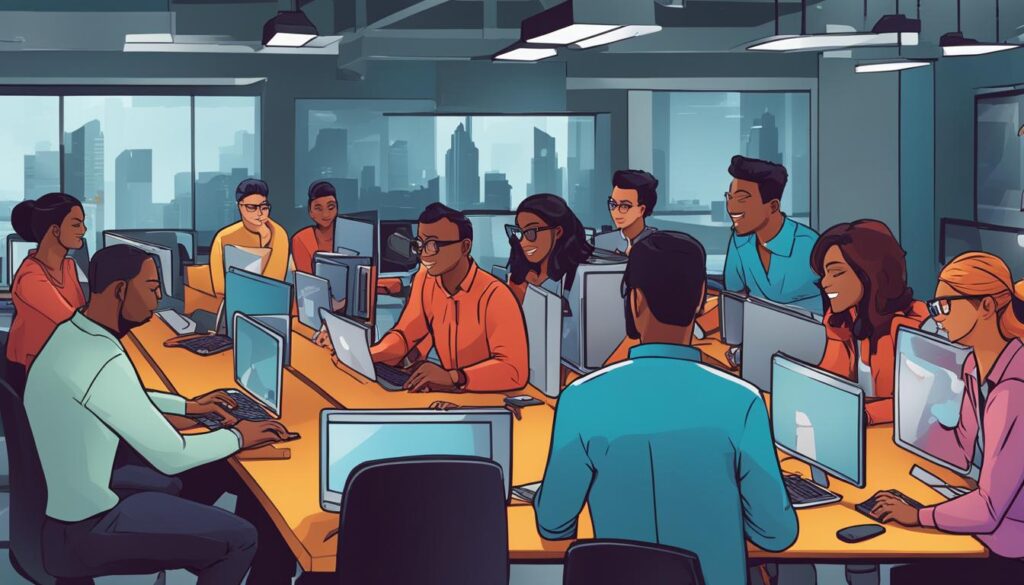
Choosing the right team building activity for your team can significantly contribute to a positive team dynamic, enhanced collaboration, and improved team performance. By considering factors such as comfort, inclusivity, and the specific goals you aim to achieve, you can select activities that align with your team’s needs and foster a supportive and engaging environment.
Personality Test Team Building Activity
A key aspect of team building is understanding individual strengths and how they contribute to overall team dynamics. A personality test is a valuable tool that can help team members gain insights into themselves and their colleagues. By identifying different personality traits and how they interact, teams can address potential clashes and work together more effectively.
Two popular personality tests used in team building activities are the DISC personality test and the True Colors personality test. These tests provide valuable insights into individual strengths, communication styles, and preferred working methods.
The DISC personality test categorizes individuals into four main personality types: Dominance, Influence, Steadiness, and Conscientiousness. Each type has its own set of characteristics and preferred ways of interacting with others. Understanding these personality types can help team members appreciate the diversity within the team and adapt their communication and working styles accordingly.
The True Colors personality test, on the other hand, categorizes individuals into four color categories: Blue, Gold, Green, and Orange. Each color represents a different temperament and communication style. By identifying their True Colors, team members can gain a better understanding of their own strengths and how they can contribute to the team dynamic.
Implementing a personality test team building activity can be done virtually or in-person, depending on the needs and preferences of the team. The activity can be structured in various ways, such as group discussions or individual assessments followed by a group debriefing session.
Here is an example of a personality test team building activity using the DISC personality test:
DISC Personality Test Activity: Understanding Team Dynamics
Step 1: Have each team member complete the DISC personality test questionnaire individually.
Step 2: Compile the results and create a visual representation of the team’s personality distribution. This can be done using a table or chart.
Step 3: Facilitate a team discussion to analyze the results and identify patterns or trends within the team.
Step 4: Encourage team members to share their own strengths and preferred working styles based on their personality types.
Step 5: Discuss as a team how to leverage each individual’s strengths and adapt communication styles to improve collaboration and team synergy.
By incorporating personality test team building activities, teams can foster a deeper understanding of individual strengths, improve communication, and enhance overall team performance.
| DISC Personality Test Types | Key Characteristics |
|---|---|
| Dominance | Assertive, results-oriented, direct communication style |
| Influence | Social, outgoing, persuasive communication style |
| Steadiness | Patient, supportive, team-oriented communication style |
| Conscientiousness | Detail-oriented, analytical, systematic communication style |
Collaborative Problem-Solving Game
A collaborative problem-solving game is an engaging way to foster teamwork, collaboration, and unleash creativity within a team. By creating a fictional problem, the game challenges team members to work together, utilizing their problem-solving skills to find innovative solutions.
This game not only encourages effective collaboration but also provides valuable insights into team dynamics. As team members collaborate and communicate, they gain a deeper understanding of each other’s strengths and working styles. This increased understanding can lead to improved team cohesion and more efficient collaboration in future projects.
Through the collaborative problem-solving game, team members can leverage their collective knowledge and skills to overcome challenges. By pooling their ideas, creativity flourishes, leading to unique and effective solutions. This collaborative approach also promotes a sense of ownership and shared responsibility, as team members work towards a common goal.
“The collaborative problem-solving game allowed our team to tap into our collective problem-solving skills and work together in a fun and engaging way. We were able to come up with innovative solutions that none of us would have thought of individually.”
Key Benefits of Collaborative Problem-Solving Game:
- Promotes teamwork and collaboration
- Fosters creativity and out-of-the-box thinking
- Encourages effective communication and idea sharing
- Provides insights into team dynamics and working styles
- Builds trust and strengthens relationships among team members
Whether the team is virtual or in-person, the collaborative problem-solving game is a versatile activity that can be adapted to different settings. It is an effective tool for enhancing problem-solving skills, fostering collaboration, and improving overall team performance.
Two Truths, One Lie Icebreaker Game
The Two Truths, One Lie icebreaker game is a fantastic activity to foster team bonding and strengthen communication among team members, whether they are part of a virtual team or an in-person team. This game provides an opportunity for individuals to share interesting facts about themselves while also challenging others to distinguish between truth and falsehood.
To play the game, each participant must prepare three statements about themselves: two true statements and one false statement. These statements can be about various aspects of their personal lives, hobbies, experiences, or even talents. The goal is to create a mix of statements that are plausible, making it difficult for others to determine which one is false.
Once everyone has prepared their statements, they take turns sharing them with the rest of the team. Each participant reads their three statements aloud, and the rest of the team must carefully listen and analyze the information. After each presentation, team members can ask questions to gain further insights before making their guesses.
“I once swam with dolphins in the Caribbean.”
“I can play three musical instruments.”
“I have been skydiving in New Zealand.”
After hearing all the statements, team members discuss among themselves and individually write down their guesses about which statement they believe is the lie. Once everyone has made their choices, the team can share their answers simultaneously, revealing the correct and incorrect guesses.
This icebreaker game not only promotes communication and active listening but also encourages team members to learn interesting facts about each other. It provides an engaging platform for team bonding and creating connections within the team, which are essential for effective collaboration and a harmonious work environment.
Additionally, the Two Truths, One Lie icebreaker game is adaptable to accommodate different team sizes and can be easily facilitated in both virtual and in-person settings. Whether participating from different locations or in the same physical space, team members can take turns sharing their statements and engaging in discussions through video calls or in-person interactions.
By incorporating this icebreaker game into team-building activities and regular meetings, team members can not only have fun but also build stronger relationships, foster effective communication, and enhance overall team synergy.
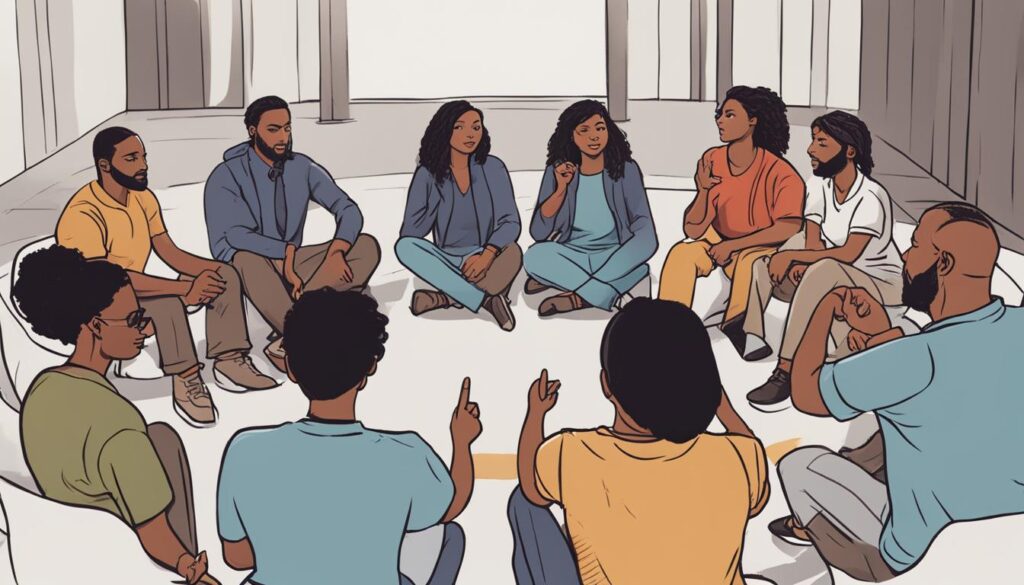
Jigsaw Puzzle Team Challenge
The jigsaw puzzle team challenge is an engaging activity that promotes problem-solving, teamwork, and cooperation among team members. Whether in a virtual or in-person team setting, this challenge requires teams to work together to complete a puzzle, but here’s the twist – some of the puzzle pieces actually belong to other teams. This means that teams must negotiate, exchange, or collaborate with other teams to obtain the missing pieces needed to complete their own puzzle.
This unique challenge not only tests the problem-solving skills of the team but also encourages effective communication and collaboration. Team members must strategize, coordinate, and support each other to overcome obstacles and achieve the common goal of completing the puzzle.
Here’s an example of how the jigsaw puzzle team challenge can be structured:
- Divide the participants into teams, ideally consisting of a mix of individuals with different strengths and skills.
- Assign each team a different jigsaw puzzle to solve.
- Randomly distribute some puzzle pieces from each team’s puzzle to other teams.
- Explain the challenge to the teams, emphasizing the need for collaboration and negotiation to acquire the missing pieces.
- Allow the teams to interact and communicate with each other to negotiate the exchange of puzzle pieces.
- Set a time limit for the challenge.
- Observe the teams as they work together, identifying their problem-solving strategies, teamwork dynamics, and communication skills.
- Declare the winning team based on the completion of their puzzle within the given time frame.
This activity not only fosters problem-solving and teamwork but also encourages creativity, collaboration, and critical thinking. It offers team members a chance to experience the value of effective communication and cooperation while working towards a common objective.
Example Team Challenge Results:
| Teams | Time to Complete | Level of Collaboration | Overall Success |
|---|---|---|---|
| Team A | 35 minutes | High | Successful |
| Team B | 45 minutes | Medium | Partial Success |
| Team C | 50 minutes | Low | Unsuccessful |
The table above showcases the results of a jigsaw puzzle team challenge conducted with three teams. Team A completed the puzzle in 35 minutes through high collaboration and achieved overall success. Team B took 45 minutes, had medium collaboration, and had partial success. Team C, with low collaboration, took 50 minutes and was unsuccessful in completing the puzzle.
The jigsaw puzzle team challenge is an effective way to promote problem-solving, teamwork, and cooperation in both virtual and in-person team environments. By working together to overcome obstacles and achieve a common goal, team members develop stronger bonds, enhanced communication skills, and improved problem-solving abilities.
Mini-Society Team Building Game
Looking for a team building game that promotes problem-solving, creativity, communication, and teamwork? The mini-society team building game is just what you need! This engaging activity involves creating a small economy or aspect of society, providing teams with an opportunity to work together to solve problems, make decisions, and understand different perspectives.
Whether you have a virtual team or an in-person team, the mini-society game has proven to be a powerful tool for fostering collaboration and mutual understanding. By taking on the roles and responsibilities within their created society, team members gain valuable insights into the dynamics of teamwork and gain practical experience in problem-solving scenarios.
As teams navigate their mini-society, they encounter challenges and obstacles that require creative thinking and effective communication to overcome. This game encourages individuals to tap into their problem-solving skills, while also nurturing a sense of camaraderie and teamwork.
By participating in the mini-society team building game, teams develop a deeper understanding of one another’s strengths and areas for growth. They learn the importance of effective communication, as well as the value of collaboration and open-mindedness when faced with complex problems.
In addition to its many benefits, the mini-society game has the flexibility to be adapted to both virtual and in-person team settings. It can be conducted through virtual platforms, allowing remote teams to come together and collaborate effectively. For in-person teams, the game can be enriched with physical props and immersive elements to create an engaging and interactive experience.
So why not introduce the mini-society team building game to your team? Watch as they develop their problem-solving abilities, embrace creativity, and strengthen their communication skills. This game is sure to leave a lasting impact on your team’s dynamics and overall performance.
Get your team ready for an exciting journey of problem-solving and collaboration with the mini-society team building game!
Journal of Team Memories
The journal of team memories is a valuable team-building activity that fosters creativity, collaboration, and team bonding. It serves as a repository for team members to contribute their thoughts, experiences, and cherished memories, creating a shared sense of team culture. Whether your team works in a virtual or in-person setting, the journal acts as a powerful reminder of the team’s journey and accomplishments.
By regularly documenting team memories, you can reflect on past successes, milestones, and challenges that your team has overcome together. This not only strengthens the bond among team members but also promotes a positive and supportive team culture. The act of contributing to the journal allows team members to express their creativity and share their unique perspectives, fostering a sense of belonging and camaraderie.
Consider incorporating prompts or themes to inspire team members’ contributions to the journal. This can range from highlighting individual achievements to capturing memorable team experiences. Encourage team members to include anecdotes, photos, or even artwork that encapsulate their team memories. By doing so, you create a rich and vibrant documentation of your team’s journey.
Team memories form the foundation of a strong team culture and provide a source of inspiration and motivation for future endeavors. They remind us of the bonds we’ve formed, the challenges we’ve conquered, and the victories we’ve celebrated together.
In a virtual team, the journal of team memories holds even greater significance. It creates a tangible connection among team members who may be physically distant from one another. By sharing their experiences and memories in the journal, virtual teams can bridge the gap and foster a sense of togetherness, despite being physically apart.
Sample Contributions to the Journal of Team Memories:
John: “I’ll never forget the time we successfully launched our new product. It was a true testament to our team’s dedication and hard work.”
Sarah: “The team-building retreat we had last year was unforgettable. We laughed, we learned, and we formed lifelong friendships. It brought us closer together as a team.”
Michael: “I remember when we faced a major setback, but we rallied together and found a solution. It taught us the power of resilience and teamwork.”
Emily: “One of my favorite memories is our team’s brainstorming sessions. The creativity and diversity of ideas that emerge during those sessions are simply inspiring.”
As you continue to contribute to the journal of team memories, you create a document that encapsulates the essence of your team’s journey and the unique bonds that tie you together. It becomes a treasured artifact that can be revisited, shared with new team members, and serve as a source of inspiration for future projects and challenges.
Conclusion
Cooperative challenges are key to unlocking the full potential of a team. By engaging in team building games and activities, team players have the opportunity to collaborate, solve problems, and communicate effectively, resulting in a deeper understanding of each other’s strengths. Whether in a virtual or in-person setting, cooperative challenges foster teamwork, build trust, and significantly improve overall team performance.
By incorporating these activities into the team’s routine, team dynamics are enhanced, and team members can develop their collaborative skills while strengthening their bond. Effective communication and active cooperation are vital for successful collaboration, ensuring that every team member feels valued and contributing to the group decision-making process.
Cooperative learning becomes a catalyst for growth, enabling team players to leverage their collective strengths and tackle challenges with confidence. With each successful collaboration, the team becomes more adept at problem-solving and gains insights into their unique team dynamics. Embracing cooperative challenges leads to a harmonious and productive team environment where individuals thrive and goals are achieved with ease.

As the founder of Friends Game Night, Ryan channels his enthusiasm for gaming into a platform that celebrates the magic of gathering friends around the digital or physical tabletop. Through his website, Ryan shares insightful articles, reviews, and recommendations, aiming to inspire others to create their own memorable gaming moments.
Subscribe to Our Newsletter


